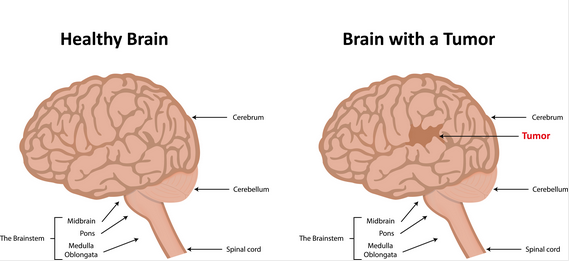An abnormal tissue growth within your spinal canal or within the bones of your spine is termed as spinal cord tumor. When the tumor begins from within the spinal cord, it is called intradural tumor and when the tumor affects the bones of the spine, it is called vertebral tumor. Based on the origin of the tumor, it is also classified as:
- Primary spinal cord tumors: Tumor that originate in the cells within or next to the spinal cord
- Secondary spinal cord tumors: Tumor that originated and spread from another part of the body like the lungs, breasts, thyroid, kidney etc. Secondary tumors are mostly metastatic in nature.
Know the Symptoms
Symptoms are caused due to the pressure on spinal nerve roots. Due to this, the pain may radiate along the course of the nerve, which over a long period of time may cause wasting away of the muscles affected by the nerve. Nerve compression may cause the following symptoms:
- Severe back pain
- Decreased sensation, progressive weakness, or paralysis in affected area
- Loss of bladder and bowel control
- Erectile dysfunction in men
- Stiff neck or back
- Difficulty in walking
- Decreased sensitivity to pain, heat and cold
Diagnosis
It is very important to diagnose the compression of the spinal cord by a tumor as early as possible for immediate treatment to prevent permanent damage. Diagnosis is done with:
- Magnetic resonance imaging (MRI)
- Myelography with computed tomography (CT)
- Biopsy
Treatment
Spine tumor surgery is vital to restore spinal stability and functioning of the spine. Surgery is also helpful for decompression of neural elements, pain reduction, and preventing the spread of the tumor. Recurrence of the condition can also be reduced to a great extent through surgery. Depending on the condition of each patient the treatment options like radiation therapy and chemotherapy along with other medications are also combined together for better results. The outcome of the treatment depends on the age, overall health of the patient and on the type of spinal tumor (whether it is benign or malignant, primary or metastatic). Recovery also depends on how quickly treatment started and how much damage was done to the body. Physical therapy and inpatient rehabilitation will help the patient to restore strength, function and speed up the recovery process.
Visit Us: chennaibrainandspine.com
Mail Us: shyamsundar_krishnan@yahoo.com
Book Appointment: chennaibrainandspine.com/book-appointment.html









